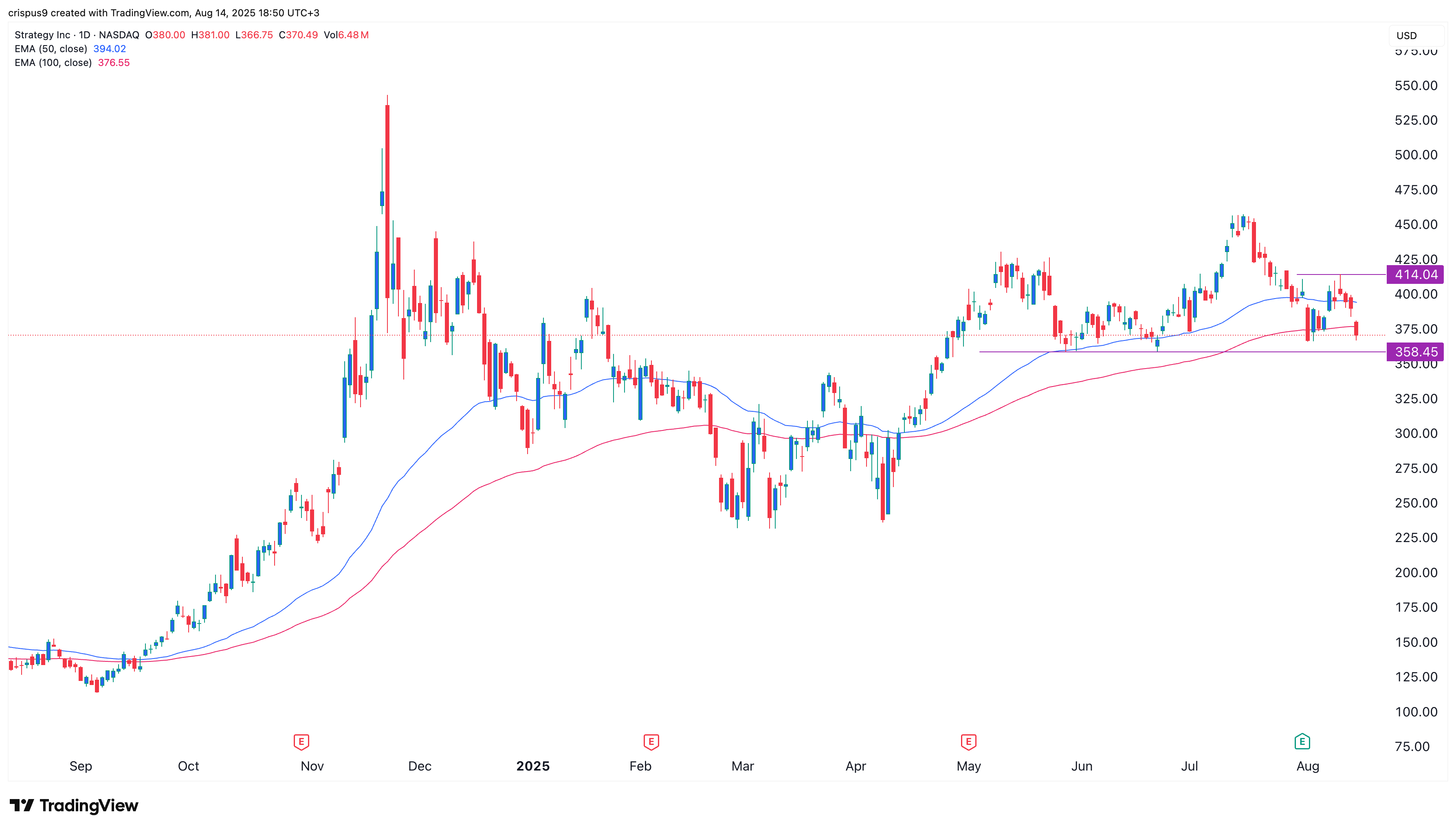Strategy stock crashing despite Bitcoin price hitting ATH: here’s why
Strategy stock continued its downward trend on Thursday despite Bitcoin price reaching a new record high of $124,420.
- MSTR share price has moved into a bear market after falling by 20% from the YTD high.
- It has dropped even as Bitcoin jumped to a record high today.
- Technicals show that it is at risk of more downside if it loses key support.
MSTR stock dropped to $ 375.80, down 20% from the year-to-date high of $457 and 30% lower than its highest level in 2024.
Strategy stock has pulled back because of valuation concerns
One potential reason for the recent decline in the MSTR stock price is its valuation. Data shows that the company holds 628,946 coins valued at over $74.78 billion. Its average cost per coin is $73,288, meaning it has realized a 62% gain.
The company has a market capitalization of $107 billion, giving it a NAV multiple of 1.428. This multiple has been falling gradually after peaking at 3.31 in November last year.
Still, the company is overvalued because of the $33 billion gap between its current market capitalization and its Bitcoin holdings. Therefore, the ongoing MSTR stock drop is likely due to investors attempting to close the valuation gap.
The falling premium is also likely because the Bitcoin treasury industry is becoming saturated. There are now over 100 companies trying to boost their stock prices by following the MicroStrategy model.
Strategy stock has also struggled amid an influx of short-sellers betting against it. SeekingAlpha data shows that its short interest has jumped to almost 10%. Jim Chanos, one of the most prominent short-sellers, is among those betting against it and its business model.
Another possible reason MSTR stock has wavered is fears of dilution as the company continues to issue more shares to buy Bitcoin (BTC). Its total outstanding shares have jumped to 261 million from 78 million in 2022.
Strategy argues that this dilution has been worth it as its stock has jumped by over 2,100% from its lowest point in 2022.
On the positive side, Strategy is trading at a bargain compared to analysts’ forecasts. Yahoo Finance data shows that the average analyst estimate is $569, a 55% increase from the current level.
MSTR stock price analysis

The daily timeframe shows that the Strategy share price has pulled back in the past few weeks. It has dropped to $367, down by 20% from the year-to-date high.
MSTR is approaching the crucial support level at $358, where it has failed to move below since May 28. It has also moved below the 50-day and 100-day moving averages. Therefore, a drop below that support level will confirm the bearish breakout and point to more downside toward $300. A move above the resistance at $415 will invalidate the bearish outlook.
You May Also Like

LGHL receives $600 million in financing from ATW Partners to launch HYPE Treasury

Stablecoin Speculation Triggers Swings, Hong Kong SFC and HKMA Caution Investors
